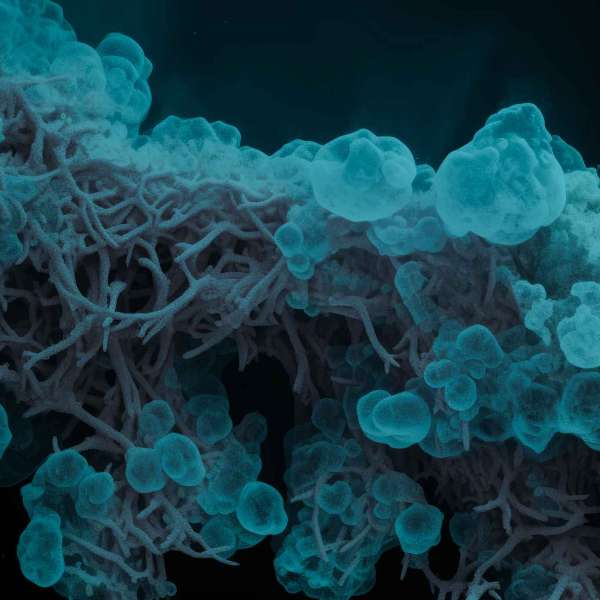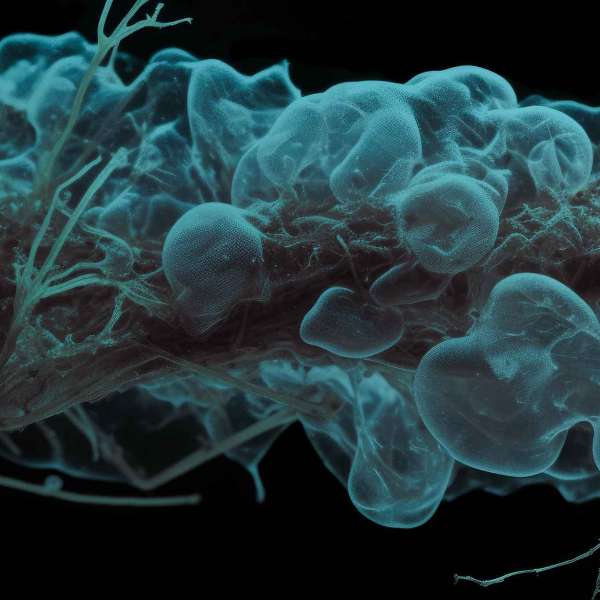AMCIPATRICIN diascorbate, known by its code SPK-843, represents a significant breakthrough in antifungal treatment. This semi-synthetic, water-soluble polyene antibiotic boasts a powerful broad-spectrum antifungal activity. It is especially effective against prevalent fungal pathogens such as Candida spp., Cryptococcus sp., and Aspergillus spp.
Global Impact of Systemic Fungal Infections:
AMCIPATRICIN Diascorbate: Responding to the Urgent Challenge of Candida auris
Systemic fungal infections are a growing concern for global public health. They include opportunistic diseases such as Cryptococcosis and Aspergillosis, hospital-associated infections such as Candidiasis, and certain community-acquired infections. Collectively, these conditions affect more than 300 million people worldwide, with an estimated 25 million at high risk of life-threatening complications or vision loss.
Among these pathogens, Candidozyma (Candida) auris has emerged as a particularly alarming threat. Classified by the World Health Organization within its critical priority group of fungal pathogens, C. auris has demonstrated the ability to spread rapidly within hospital environments, resist multiple antifungal drugs, and cause high mortality rates.
The ECDC Survey on the epidemiological situation, laboratory capacity and preparedness for C. auris (2024) revealed the scale of this challenge in Europe:
-
Over 4,000 cases reported in EU/EEA countries between 2013 and 2023.
-
1,346 cases in 2023 alone across 18 countries, reflecting an alarming acceleration.
-
The highest burdens recorded in Spain, Greece, Italy, Romania and Germany.
-
Transition from isolated outbreaks to regional endemicity in as little as 5–7 years.
-
Mortality rates for candidaemia ranging from 29% to 62%.
-
Significant gaps in national preparedness, with inconsistent surveillance and infection prevention measures across Europe19
Against this backdrop, Bioseutica® is proud to share highly encouraging research findings for AMCIPATRICIN Diascorbate (SPK-843).
AMCIPATRICIN Diascorbate: A Novel Antifungal Solution
In a recent in vitro study, AMCIPATRICIN Diascorbate achieved 100% inhibition of 22 isolates of C. auris, covering different geographical clades, at minimum inhibitory concentrations (MIC) as low as 1–2 µg/ml.
AMCIPATRICIN Diascorbate is a novel polyene antifungal engineered to retain broad-spectrum efficacy while overcoming the toxicity limitations that have historically hindered this drug class. Its therapeutic potential extends beyond C. auris, with demonstrated efficacy against:
-
Candida albicans, C. glabrata, C. tropicalis, C. krusei
-
Aspergillus fumigatus, A. flavus, A. terreus
-
Cryptococcus neoformans
Importantly, the injectable formulation has already demonstrated favourable safety, pharmacokinetics, and efficacy through Phase II human trials, underscoring its readiness for late-stage clinical development.
The Path Forward
As highlighted by the ECDC survey, the rise of Candida auris underscores the urgent need for safer and more effective antifungal treatments. AMCIPATRICIN Diascorbate may represent a breakthrough option, offering new hope in the fight against systemic and hospital-associated fungal infections.
At Bioseutica®, we remain committed to pioneering scientific innovation, contributing to global health, and addressing one of the most pressing infectious disease challenges of our time.
Mode of action:
AMCIPATRICIN's mechanism mirrors that of other polyene antibiotics. Its primary mode of action involves disrupting the cell membrane of fungi. This is achieved through Ergosterol binding partricin agents, leading to leakage of cytoplasmic contents. This process upsets the internal balance of the fungal cell, culminating in cell death. The effectiveness of AMCIPATRICIN in destabilizing fungal cell membranes makes it a potent agent against a range of fungal infections.
NON-CLINICAL data:
Extensive non-clinical data are available on AMCIPATRICIN and its salt with ascorbic acid.
- Single dose toxicity (Rats),i.v.
- Single dose toxicity (Cynomolgus Monkeys), i.v.
- Single dose nephrotoxicity (Rabbits), i.v.
- Repeated dose (2 weeks) toxicity study (Rats),i.v.
- Repeated dose (4+4 weeks recovery) toxicity (Rats),i.v.a
- Repeated dose (2 weeks) toxicity (Cynomolgus Monkeys) i.v.b
- Repeated dose (4 weeks) toxicity (Cynomolgus Monkeys) i.v.c
- Repeated dose (2 weeks) nephrotoxicity study in (Rabbits), i.v.
- Repeated dose (13+4 weeks recovery time) toxicity (Rats), i.v., vs. AmpB
- Reproductive toxicology: Fertility and Early Embryonic Development (Rats), i.v.
- Reproductive toxicology: Study of embryo-fetal development (Rats)
- Genotoxicity: chromosomal aberrations (Chinese hamsters)
- Genotoxicity: Peripheral blood micronucleus test (Mice), i.v.
- Mutagenesis: bacterial reverse mutation assay (Ames test)
- Vascular Irritation Study (Rabbits), 14 days, i.v.
- Effects on action potential of right ventricular papillary muscle (Guinea pigs)
i.v. : in-vitro
a. Vehicle: Glucose and Intralipid
b. Vehicle: Intralipid
c. Vehicle: Glucose
d. Lung fibroblast cells
NON-CLINICAL Safety Pharmacology Studies:
Safety Pharmacology Study compared to other polyene (general signs and behavior, CNS, autonomic nervous system and smooth muscles, peripheral nervous system, gastrointestinal system, cardiovascular system and the respiratory system, water and electrolyte metabolism, blood, pyrogenic effect in rabbits).
NON-CLINICAL Efficacy Pharmacology Studies
- Candida albicans (Rats)
- Pulmonary aspergillosis (Mice)
- Cryptococcal meningoencephalitis (Mouse)
- Pharmacokinetics after multiple doses (4 weeks) i.v. (Rats)
Proven in-vitro antifungal activity against:
- Candida spp (albicans, glabrata, tropicalis, krusei, guilliermondii, kefyr, parapsilosis, stellatoidea, utilis, clinical isolates of Candida auris)
- Non-Candida yeast tested (Cryptococcus neoformans, C. laurentii, Saccharomyces cerevisiae, Trichosporon beigelii, Rhodotorula pilimanae)
- Filamentous fungi (Aspergillus spp., Paecilomyces variottii, Penicillium spp.,Sporothrix schenkii, Mucor sp., Rhizopus oryzae, Microsporum spp., Trichophyton spp.)
Human clinical studies:
Phase I Studies
- A Single Ascending Dose Pilot Study in Healthy Adult Males (i.v.)
- Human Pharmacology Study with Repeated Dose (14 days) by (i.v.) in Healthy Male Volunteers
Phase II Studies
- Efficacy, safety, and PK in patients with deep Mycosis (Chronic, Necrotizing Pulmonary Aspergillosis and Pulmonary Cryptococcosis) (Exploratory study: multicenter, open-label, uncontrolled, i.v.)
- An open-label, dose-escalation pilot study to investigate the safety and efficacy of SPK-843 (AMCIPATRICIN) i.v., in treating esophageal candidiasis in HIV-infected patients.
Main overall outcomes:
- Relative acute toxicity in mice, rats, and monkeys is lower than in other polyenes.
- 13-week toxicity study: no evidence of serious nephrotoxicity even at the highest dose (5 mg/kg).
- Non-toxic dose level: 0.2 mg/kg b.w. in rats (13-week i.v. toxicity study)
Potential Applications - Fungal Infection Treatments:
- Fungal Asthma Treatment
- Candidiasis – Invasive Candidiasis Treatment
- Aspergillosis – Invasive Aspergillosis Treatment
- Treatment for Allergic Bronchopulmonary Aspergillosis in Cystic Fibrosis
- HIV Esophageal Candidiasis Treatment
- Hospital Infections Treatment
- Community-Acquired Infections Treatment
Publications
- Bonabello A, Galmozzi MR, Buffa G, Bruzzese T. Pharmacokinetics in rodents of a new semisynthetic polyene antibiotic (SPA-S-753) for systemic use. Int Congr Pharmacol. 1994;12 P.12.2.23.
- Bruzzese, T., M. R. Galmozzi, V. M. Ferrari, P. Sala, and A. Bonabello.2001. Comparative pharmacokinetics of three preparations of the new antifungal SPK-843. Chemotherapy 47:387-395.
- Bruzzese, T., M. R. Galmozzi, G. Buffa, P. Sala, and A. Bonabello.2001. Pharmacokinetics in rats of N-dimethylaminoacetyl-partricin A2-dimethylaminoethylamide diascorbate (SPK-843). Chemotherapy47:77-85.
- Bruzzese T, Rimaroli C, Bonabello A, Signorini M. Amide derivates of partricin A with potent antifungal activity. Eur J Med Chem. 1996;31:965–972.
- Hiroshi Kakeya, Yoshitsugu Miyazaki, Hisato Senda, Tsutomu Kobayashi, Masafumi Seki, Koichi Izumikawa, Kazunori Yanagihara, Yoshihiro Yamamoto, Takayoshi Tashiro, and Shigeru Kohno 2008 Efficacy of SPK-843, a Novel Polyene Antifungal, in Comparison with Amphotericin B, Liposomal Amphotericin B, and Micafungin against Murine Pulmonary Aspergillosis- American Society for Microbiology Antimicrobial Agents and ChemotherapyVolume 52, Issue 5, May 2008, Pages 1868-1870
- Izumikawa K, Senda H, Miyazaki Y, Morinaga Y, Kobayashi T, Ohno H, Yanagihara K, Higashiyama Y, Hirakata Y, Tashiro T, Kohno S. Efficacy of SPK-843, a novel polyene antifungal, in murine pulmonary aspergillosis in comparison with amphotericin B and micafungin. Icaac. 2004;44 Abs F-850.
- Kakeya H, Miyazaki Y, Senda H, Kobayashi T, Seki M, Izumikawa K, Yanagihara K, Yamamoto Y, Tashiro T, Kohno S. 2008 Efficacy of SPK-843, a novel polyene antifungal, in comparison with amphotericin B, liposomal amphotericin B, and micafungin against murine pulmonary aspergillosis. Antimicrob Agents Chemother. 2008 May;52(5):1868-70. doi: 10.1128/AAC.01369-07. Epub 2008 Feb 25.
- Kakeya H, Miyazaki Y, Senda H, Kobayashi T, Seki M, Izumikawa K, Yamamoto Y, Yanagihara K, Tashiro T, Kohno S. 2008 Efficacy of SPK-843, a novel polyene antifungal, in a murine model of systemic cryptococcosis. Antimicrob Agents Chemother. 2008 May;52(5):1871-2. doi: 10.1128/AAC.01370-07. Epub 2008 Feb 25.
- Kantarcioglu, A. S., A. Yucel, and V. Vidotto.2003. In vitro activity of new polyene SPK-843 against Candida spp., Cryptococcus neoformans, and Aspergillus spp. clinical isolates. J. Chemother.15:296-298.
- Kohno S, Miyazaki Y, Izumikawa K, Morinaga Y, Kobayashi T, Ohno H, Yanagihara K, Higashiyama Y, Hirakata Y, Tashiro T. Efficacy of SPK-843, a novel polyene antifungal in a murine model of systemic cryptococcosis. Icaac. 2004;44 Abs F-848.
- Luna T, Mazzolla R, Roman'o G, Blasi E. Potent antifungal effects of a new derivative of partricin A in a murine model of cerebral cryptococcosis. Antimicrob Agents and Chemother. 1997;41(3):706–708. [PMC free article]
- Mozzi G, Benelli P, Bruzzese T, Galmzzi MR, Bonabello A. The use of lipid emulsions for the in-vitro administration of new water-soluble polyene antibiotic SPK-843. J Antimicrob Chemother. 2002;49(2):321–325. [PubMed]
- Rimaroli C, Bruzzese T. In vitro activity of a new polyene, SPA-S-843, against yeasts. Antimicrob. Agents and Chemother.998;42(11):3012–3013.
- Rimaroli C, Bruzzese T. Overview of SPA-S-843 in vitro activity against filamentous fungi. Chemotherapy. 2000;46(1):28–35. [PubMed]
- Rimaroli C, Bonabello A, Sala P, Bruzzese Pharmacokinetics and tissue distribution of new partricin A derivative (N-dimethylamino particin A2-dimethylaminoethylamide aspartate) in mice. J Pharm Sci. 2002;91(5):1252–1258. [PubMed]
- Senda, H., T. Maejima, Y. Konishi-Watanabe, Y. Tatsumi, and M. Yokoo.2000. SPK-843, a new polyene antibiotic with potent in vitro activity and strong fungicidal effect. Abstr. 40th Intersci. Conf. Antimicrob. Agents Chemother., abstr. 1093.
- Senda H, Tatsumi Y, Watanabe Y, Yokoo M, Ishiyama D. In vitro and in vivo eradicative efficacy of SPK-843 on Candida albicans. Icaac. 2004;44 Abs F-849.
- Sesoko S, Michigami I, Umemura K, Nakashima M, Sesoko S, Sesoko S. Pharmacokinetics (PK), safety, and tolerability of SPK-843ID in healthy Japanese males. Icaac. 2003;43:A-1570.
- Survey on the epidemiological situation, laboratory capacity and preparedness for Candidozyma (Candida) auris, 2024. Stockholm: ECDC; 11 September 2025. DOI:10.2900/2025052.



